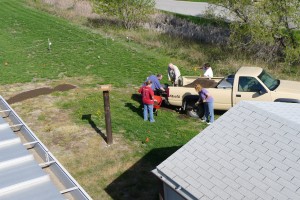As we sit down with family and friends to enjoy our Thanksgiving meal, we need to remember one out of every three bites of food we eat is there because of pollinators.
A list of just a few pollinated foods:
Cranberries-pollinated by over 40 native bees and bumblebees
Pumpkin-squash and gourd bees, bumblebees
Apples-honey bee, blue mason orchard bees
Cherry-solitary bees, bumblebees, honey bees
Blueberries-bees, bumblebees
Raspberries-bees, bumblebees, flies
Melons-bees
Vanilla-bees
Coffee-bees and flies
Chocolate-bees and flies
MJ





